Calibration gas generation system
PermeaterPD-1C

The Permeater is a gas generator for calibration purposes that utilises permeation and diffusion tubes to generate the calibration gas.
- Gas for calibration can be generated continuously for longer periods of time
- Calibration gas can be easily generated in a wide range of concentrations
- Highly reliable as concentration is determined by measuring basic physical quantities such as weight loss and dilution gas quantity
- Many types of low concentration calibration gases can be generated
- Automatic calculation of the dilution gas flow rate when the desired gas concentration to be generated is entered on the touch screen
- Mass flow controller (gas flow controller) controls flow changes
| Name of Gases to be generated | ●Permeation Tube Method Stable, high-purity substances with boiling points in the range -60 to +30 ℃ as gas properties. ●Diffusion Tube Method Stable, high purity substances with vapour pressures in the range 5-400 mmHg at temperatures between 30 and 50 ℃ as liquid properties. |
|---|---|
| Dilution gas | Nitrogen or Air |
| Dilution gas pressure | 0.15 – 0.6MPa |
| Flow rate setting range | 0.2 – 10L/min |
| Flow rate setting accuracy | 0.2 – 0.4L/min:±13.2% s.p. 0.4 – 1L/min:±7.0% s.p. 1 – 10L/min:±3.7% s.p. |
| Operation temp. range | (Room temperature +5℃)–50℃ *1 |
| Temperature setting accuracy | ±0.15℃ |
| Tube Holder Capacity | Permeation tube Standard size : 10pcs. H size *2 : 5pcs. Diffusion Tube for D-10, D-20, D-30: 1pcs. For Multi-type Diffusion Tubes: 4pcs. |
| Power supply, Max power consumption | 100-240V AC 50-60Hz 160W |
| Dimensions | 250(W)×340(H)×315(D)mm |
| Weight | Approx. 14kg (without water) |
| Standard accessories | Tube for calibration gas(FEP Tube O.D. φ6 x I.D. φ4mm 2m) × 2, Tube for dilution gas (with dust filter) (O.D. φ6 x I.D. φ4mm 2m)× 1, Power Cord × 1 *3, Conversion adapter × 1 *3, Rubber Stopper × 1, Tube hoding cage × 1, Funnel × 1, Spanner × 1 |
| Standards | Low Voltage Directive EN61010-1 EMC EN61326-1 (For use in industrial locations) RoHS EN IEC63000 |
| * | *1 Room temperature 15-30 ℃ *2 Permeation tubes with H in Cat. No. *3 The item(s) may vary by country or region. |
PermeaterPD-1B-2 / PD-1B *

- Highly reliable because concentration levels are determined by calculating weight loss based on
- Many types (both organic and inorganic) of low-concentration calibration gases) can be generated
- Gas for calibration of all organic solvents (as long as they are stable in their liquid state or at normal temperatures) can be generated
- Gas for calibration can be generated continuously for longer periods of time
- Calibration gas can be easily generated in a wide range of concentrations
- 【PD-1B-2】It has parallel gas flow paths and can generate two kinds of calibration gases simultaneously.
| Target gas to be generated | Permeation tube method: As a characteristic of the gas, the boiling point ranges between -60 and +30℃. In addition, the stable, high purity material used for the permeation tube enable the calibration gas to be generated. Diffusion tube method: As characteristics of the liquid, the vapour pressure over the temperature range of 25-50℃ lies within the range of 5-400 mmHg. In addition, the stable, high purity material used for the permeation tube enables calibration gas to be generated. |
|---|---|
| Accuracy of the generated gas | +/- 3% |
| Flow adjustment range | 0.2-10L/min (Tapered tube 0.2-2L/min, 1-10L/min) |
| Temperature setting | 5-step setting: 25, 30, 35, 40, 50ºC (When the difference between room temperature and the set temperature is 3ºC or less, cooling with city water or some other method is necessary.) |
| Temperature setting accuracy | +/- 0.15ºC |
| Dimensions | 301(H) x 306(W) x 270(D)mm |
| weight | 13kg |
| Power supply, Max power consumption | AC100V 50/60Hz 180W |
| Dilute gas, Standard gas connection port | Tubes of O. D. 6 mm, and I. D. 4 mm |
Permeation tube acetaldehydeP-92-1

A permeation tube is a fluororesin tube that contains high-grade liquefied gas. When the tube is exposed to a certain temperature, liquefied gas penetrates the tube wall by osmosis in time-increments enabling a specific quantity of gas to be retained in the tube. Consequently, a carrier gas flowing at a constant speed (for calibration purposes) can be continuously generated by keeping the tube at a fixed temperature and infusing a constant quantity of dilution gas. This method is highly reliable because the concentration of the calibration gas is determined by calculating the decrease in weight of the permeation tube and the quantity of dilution gas. This dynamic method also enables highly reactive gases such as hydrogen sulphide or ammonia to be generated. As shown in the table below, there are many different kinds of Permeation tubes and they are widely used because they can provide a stable supply of calibration gas.
Concentration range 0.1 – 5.2 ppm
Permeation tube ammoniaP-3

A permeation tube is a fluororesin tube that contains high-grade liquefied gas. When the tube is exposed to a certain temperature, liquefied gas penetrates the tube wall by osmosis in time-increments enabling a specific quantity of gas to be retained in the tube. Consequently, a carrier gas flowing at a constant speed (for calibration purposes) can be continuously generated by keeping the tube at a fixed temperature and infusing a constant quantity of dilution gas. This method is highly reliable because the concentration of the calibration gas is determined by calculating the decrease in weight of the permeation tube and the quantity of dilution gas. This dynamic method also enables highly reactive gases such as hydrogen sulphide or ammonia to be generated. As shown in the table below, there are many different kinds of Permeation tubes and they are widely used because they can provide a stable supply of calibration gas.
Concentration range 0.2 – 17.9 ppm
Permeation tube ammoniaP-3-M

A permeation tube is a fluororesin tube that contains high-grade liquefied gas. When the tube is exposed to a certain temperature, liquefied gas penetrates the tube wall by osmosis in time-increments enabling a specific quantity of gas to be retained in the tube. Consequently, a carrier gas flowing at a constant speed (for calibration purposes) can be continuously generated by keeping the tube at a fixed temperature and infusing a constant quantity of dilution gas. This method is highly reliable because the concentration of the calibration gas is determined by calculating the decrease in weight of the permeation tube and the quantity of dilution gas. This dynamic method also enables highly reactive gases such as hydrogen sulphide or ammonia to be generated. As shown in the table below, there are many different kinds of Permeation tubes and they are widely used because they can provide a stable supply of calibration gas.
Concentration range 0.3 – 40.8ppm
Permeation tube 1, 3-butadieneP-174-H

A permeation tube is a fluororesin tube that contains high-grade liquefied gas. When the tube is exposed to a certain temperature, liquefied gas penetrates the tube wall by osmosis in time-increments enabling a specific quantity of gas to be retained in the tube. Consequently, a carrier gas flowing at a constant speed (for calibration purposes) can be continuously generated by keeping the tube at a fixed temperature and infusing a constant quantity of dilution gas. This method is highly reliable because the concentration of the calibration gas is determined by calculating the decrease in weight of the permeation tube and the quantity of dilution gas. This dynamic method also enables highly reactive gases such as hydrogen sulphide or ammonia to be generated. As shown in the table below, there are many different kinds of Permeation tubes and they are widely used because they can provide a stable supply of calibration gas.
Concentration range 0.7 – 31ppm
Permeation tube bromineP-10-H

A permeation tube is a fluororesin tube that contains high-grade liquefied gas. When the tube is exposed to a certain temperature, liquefied gas penetrates the tube wall by osmosis in time-increments enabling a specific quantity of gas to be retained in the tube. Consequently, a carrier gas flowing at a constant speed (for calibration purposes) can be continuously generated by keeping the tube at a fixed temperature and infusing a constant quantity of dilution gas. This method is highly reliable because the concentration of the calibration gas is determined by calculating the decrease in weight of the permeation tube and the quantity of dilution gas. This dynamic method also enables highly reactive gases such as hydrogen sulphide or ammonia to be generated. As shown in the table below, there are many different kinds of Permeation tubes and they are widely used because they can provide a stable supply of calibration gas.
Concentration range 0.016 – 2.52 ppm
Permeation tube chlorineP-8-1

A permeation tube is a fluororesin tube that contains high-grade liquefied gas. When the tube is exposed to a certain temperature, liquefied gas penetrates the tube wall by osmosis in time-increments enabling a specific quantity of gas to be retained in the tube. Consequently, a carrier gas flowing at a constant speed (for calibration purposes) can be continuously generated by keeping the tube at a fixed temperature and infusing a constant quantity of dilution gas. This method is highly reliable because the concentration of the calibration gas is determined by calculating the decrease in weight of the permeation tube and the quantity of dilution gas. This dynamic method also enables highly reactive gases such as hydrogen sulphide or ammonia to be generated. As shown in the table below, there are many different kinds of Permeation tubes and they are widely used because they can provide a stable supply of calibration gas.
Concentration range 0.04 – 4.30 ppm
Permeation tube chlorineP-8-5

A permeation tube is a fluororesin tube that contains high-grade liquefied gas. When the tube is exposed to a certain temperature, liquefied gas penetrates the tube wall by osmosis in time-increments enabling a specific quantity of gas to be retained in the tube. Consequently, a carrier gas flowing at a constant speed (for calibration purposes) can be continuously generated by keeping the tube at a fixed temperature and infusing a constant quantity of dilution gas. This method is highly reliable because the concentration of the calibration gas is determined by calculating the decrease in weight of the permeation tube and the quantity of dilution gas. This dynamic method also enables highly reactive gases such as hydrogen sulphide or ammonia to be generated. As shown in the table below, there are many different kinds of Permeation tubes and they are widely used because they can provide a stable supply of calibration gas.
Concentration range 0.15 – 16.4ppm
Permeation tube chlorineP-8-M
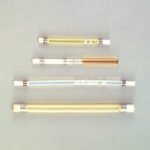
Generating calibration gas with a permeation tube
Concentration range 0.5 – 53.1 ppm
*As Permeation tubes have individual differences in permeation rates, the above concentration ranges may differ slightly from the actual range that can be controlled.
Permeation tube dimethyl disulphideP-73-H
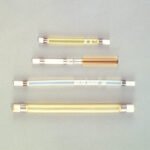
Generating calibration gas with a permeation tube
Concentration range 0.003 – 0.45 ppm
*As Permeation tubes have individual differences in permeation rates, the above concentration ranges may differ slightly from the actual range that can be controlled.
Permeation tube dimethyl sulphideP-74-H
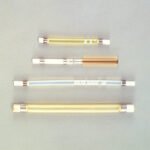
Generating calibration gas with a permeation tube
Concentration range 0.04 – 6.3 ppm
*As Permeation tubes have individual differences in permeation rates, the above concentration ranges may differ slightly from the actual range that can be controlled.
Permeation tube dimethylamineP-181-H
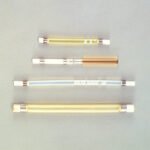
Generating calibration gas with a permeation tube
Concentration range 0.2 – 10.3 ppm
*As Permeation tubes have individual differences in permeation rates, the above concentration ranges may differ slightly from the actual range that can be controlled.
Permeation tube ethyl mercaptanP-72-H
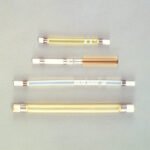
Generating calibration gas with a permeation tube
Concentration range 0.04 – 1.87 ppm
*As Permeation tubes have individual differences in permeation rates, the above concentration ranges may differ slightly from the actual range that can be controlled.
Permeation tube ethylene oxideP-163-H

Generating calibration gas with a permeation tube
Concentration range 0.5 – 23 ppm
*As Permeation tubes have individual differences in permeation rates, the above concentration ranges may differ slightly from the actual range that can be controlled.
Permeation tube formaldehydeP-91-H-5
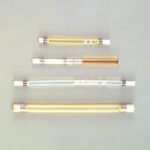
Generating calibration gas with a permeation tube
Concentration range 0.0049 – 0.24 ppm
*As Permeation tubes have individual differences in permeation rates, the above concentration ranges may differ slightly from the actual range that can be controlled.
Permeation tube hydrogen fluorideP-17
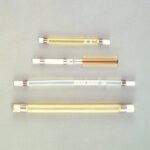
Generating calibration gas with a permeation tube
Concentration range 0.11 – 11.3 ppm
*As Permeation tubes have individual differences in permeation rates, the above concentration ranges may differ slightly from the actual range that can be controlled.
Permeation tube hydrogen fluorideP-17-5
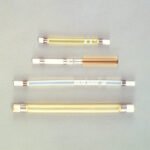
Generating calibration gas with a permeation tube
Concentration range 0.3 – 29 ppm
*As Permeation tubes have individual differences in permeation rates, the above concentration ranges may differ slightly from the actual range that can be controlled
Permeation tube hydrogen fluorideP-17-H
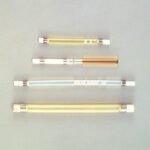
Generating calibration gas with a permeation tube
Concentration range 0.6 – 58 ppm
*As Permeation tubes have individual differences in permeation rates, the above concentration ranges may differ slightly from the actual range that can be controlled.
Permeation tube tolueneP-122-H
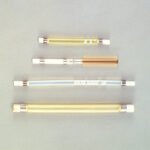
Generating calibration gas with a permeation tube
Concentration range 0.032 – 1.6 ppm
*As Permeation tubes have individual differences in permeation rates, the above concentration ranges may differ slightly from the actual range that can be controlle
Permeation tube hydrogen sulphideP-4
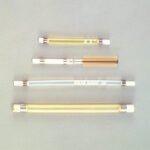
Generating calibration gas with a permeation tube
Concentration range 0.1 – 13.6 ppm
*As Permeation tubes have individual differences in permeation rates, the above concentration ranges may differ slightly from the actual range that can be controlled.
Permeation tube methyl chlorideP-132-H
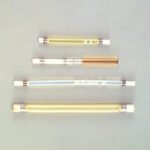
Generating calibration gas with a permeation tube
Concentration range 1.6 – 77 ppm
*As Permeation tubes have individual differences in permeation rates, the above concentration ranges may differ slightly from the actual range that can be controlled.
Permeation tube methyl mercaptanP-71-5
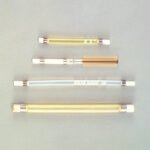
Generating calibration gas with a permeation tube
Concentration range 0.007 – 1.52 ppm
*As Permeation tubes have individual differences in permeation rates, the above concentration ranges may differ slightly from the actual range that can be controlled.
Permeation tube methyl mercaptanP-71-H
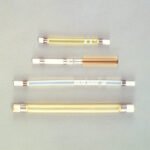
Generating calibration gas with a permeation tube
Concentration range 0.16 – 11.4 ppm
*As Permeation tubes have individual differences in permeation rates, the above concentration ranges may differ slightly from the actual range that can be controlled.
Permeation tube methylamineP-182-H
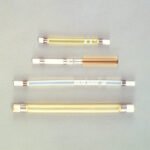
Generating calibration gas with a permeation tube
Concentration range 0.5 – 25.6 ppm
*As Permeation tubes have individual differences in permeation rates, the above concentration ranges may differ slightly from the actual range that can be controlled.
Permeation tube methylene chlorideP-138-H
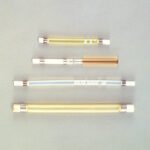
Generating calibration gas with a permeation tube
Concentration range 0.3 – 15.8 ppm
*As Permeation tubes have individual differences in permeation rates, the above concentration ranges may differ slightly from the actual range that can be controlled.
Permeation tube nitrogen dioxideP-9-1
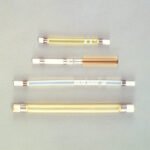
Generating calibration gas with a permeation tube
Concentration range 0.05 – 3.99 ppm
*As Permeation tubes have individual differences in permeation rates, the above concentration ranges may differ slightly from the actual range that can be controlled.
Permeation tube nitrogen dioxideP-9-H

Generating calibration gas with a permeation tube
Concentration range 1.8 – 133 ppm
*As Permeation tubes have individual differences in permeation rates, the above concentration ranges may differ slightly from the actual range that can be controlled.
Permeation tube propaneP-100
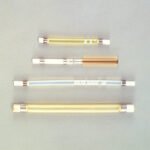
Generating calibration gas with a permeation tube
Concentration range 0.03 – 1.9 ppm
*As Permeation tubes have individual differences in permeation rates, the above concentration ranges may differ slightly from the actual range that can be controlled.
Permeation tube propylene oxideP-164-H
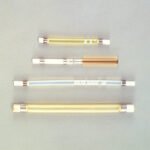
Generating calibration gas with a permeation tube
Concentration range 0.3 – 15 ppm
*As Permeation tubes have individual differences in permeation rates, the above concentration ranges may differ slightly from the actual range that can be controlled.
Permeation tube StyreneP-124-H
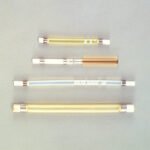
Generating calibration gas with a permeation tube
Concentration range 0.0045 – 0.22 ppm
*As Permeation tubes have individual differences in permeation rates, the above concentration ranges may differ slightly from the actual range that can be controlled.
Permeation tube sulphur dioxideP-5-5
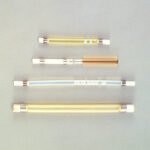
Generating calibration gas with a permeation tube
Concentration range 0.04 – 3.6 ppm
*As Permeation tubes have individual differences in permeation rates, the above concentration ranges may differ slightly from the actual range that can be controlled.
Permeation tube sulphur dioxideP-5
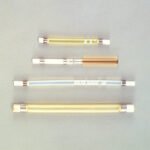
Generating calibration gas with a permeation tube
Concentration range 0.1 – 7.2 ppm
*As Permeation tubes have individual differences in permeation rates, the above concentration ranges may differ slightly from the actual range that can be controlled.
Permeation tube sulphur dioxideP-5-H
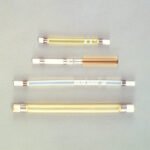
Generating calibration gas with a permeation tube
Concentration range 1.1 – 76.4 ppm
*As Permeation tubes have individual differences in permeation rates, the above concentration ranges may differ slightly from the actual range that can be controlled.
Permeation tube trimethylamineP-180-H
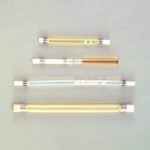
Generating calibration gas with a permeation tube
Concentration range 0.06 – 3.1 ppm
*As Permeation tubes have individual differences in permeation rates, the above concentration ranges may differ slightly from the actual range that can be controlled.
Permeation tube vinyl chlorideP-131
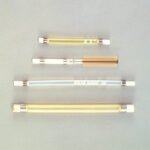
Generating calibration gas with a permeation tube
Concentration range 0.05 – 3.7 ppm
*As Permeation tubes have individual differences in permeation rates, the above concentration ranges may differ slightly from the actual range that can be controlled.
Permeation tube vinyl chlorideP-131-H
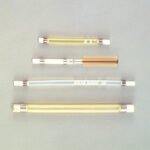
Generating calibration gas with a permeation tube
Concentration range 0.8 – 58 ppm
*As Permeation tubes have individual differences in permeation rates, the above concentration ranges may differ slightly from the actual range that can be controlled.
Permeation tube vinylidene chlorideP-130-H
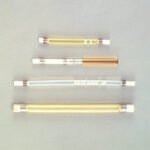
Generating calibration gas with a permeation tube
Concentration range 0.16 – 8.2 ppm
*As Permeation tubes have individual differences in permeation rates, the above concentration ranges may differ slightly from the actual range that can be controlled.
Diffusion tube3100
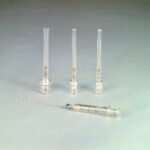
Generating calibration gas with a diffusion tube
Suitable for continuous generation of single component gases for calibration over sustained periods of time.
Diffusion tube for multiple components3200
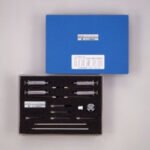
Generating calibration gas with a diffusion tube
Solvents such as thinner contain multiple components. Previous models permit the generation of single component gases for calibration purposes. However, a multiple component type diffusion tube enables the simultaneous generation of 4 types of gases for calibration. Employing this tube enhances analytical testing.
